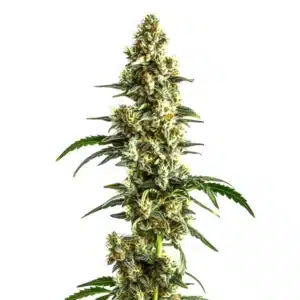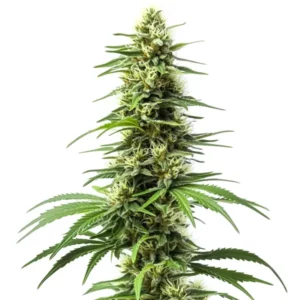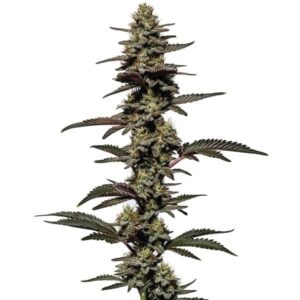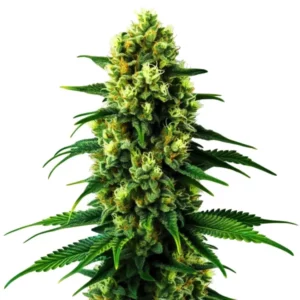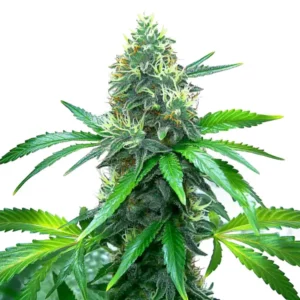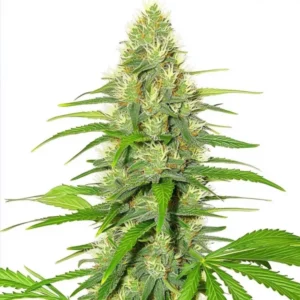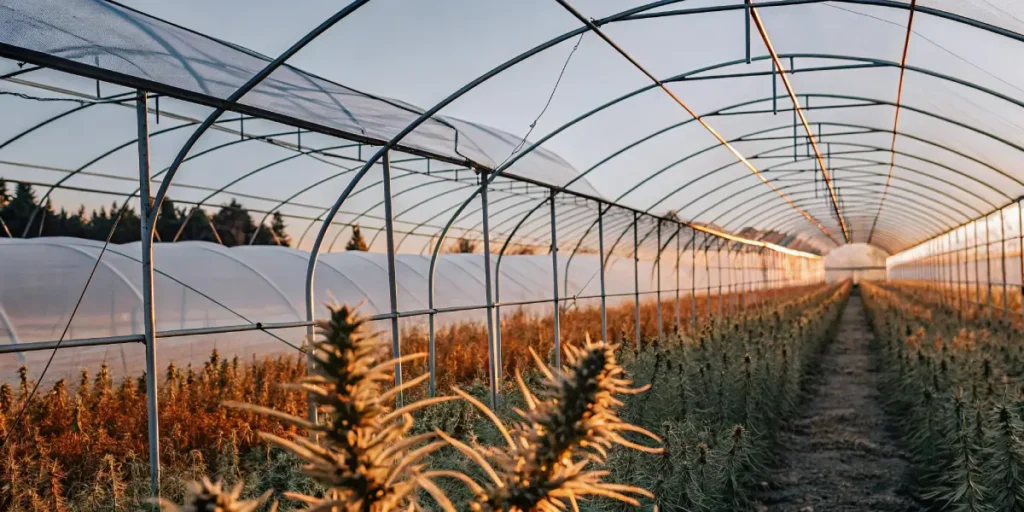
How Plant Hormones Affect Cannabis Yield
Plant hormones play a crucial role in the growth and development of cannabis plants. These natural chemicals act as messengers, controlling various functions within the plant. For both first-time cannabis seed buyers and seasoned growers, knowing how plant hormones affect cannabis yield can make a significant difference in the success of your crop.
When you think about increasing your cannabis yield, consider the impact of these hormones. By manipulating them, you can optimize your plant’s growth conditions, leading to a more bountiful harvest. In this article, we delve into the specifics of how these hormones work.
Recommended Strains
Agent Orange Regular
-
THC: 16% - 19%
-
Type of seed: Regular
-
Phenotype: 70% Sativa / 30% Indica
-
Flavor: Citrus, Fruity, Orange
-
Day to flower: 8 - 10 weeks
Harlequin
-
THC: 3% - 6%
-
Type of seed: Feminized
-
Phenotype: 75% Sativa / 25% Indica
-
Flavor: Herbal, Pine
-
Day to flower: 8 - 10 weeks
Auxins, gibberellins, and other hormones are vital for regulating plant growth. Through careful hormone management, you can significantly influence how your cannabis plants develop. This process is crucial for anyone looking to maximize their yield.
Auxins and Their Effect on Cannabis Yield
Auxins are a group of hormones that primarily influence the growth of plant cells. They are responsible for the elongation of cells, which in turn impacts the overall size and structure of the plant. Knowing the effect of auxins on cannabis plant yield can help you manipulate growth to your advantage.
By promoting cell elongation, auxins encourage the stem to grow tall and strong. This growth can lead to a healthier plant that is better capable of supporting a heavy yield. Auxins also play a part in root development, crucial for nutrient uptake.
The role of plant hormones in cannabis growth is undeniably significant, and auxins are at the forefront due to their influence on root and shoot development. A robust root system not only aids in nutrient absorption but also enhances the plant’s overall stability, allowing it to support a more substantial bud load. Thus, knowing and utilizing auxins can lead to a noticeable cannabis yield increase through hormone regulation.
Furthermore, auxins interact with other hormones like cytokinins to balance plant growth. This interaction ensures that energy is efficiently distributed throughout the plant, promoting uniform growth and development. By mastering the effect of auxins on cannabis plant yield, growers can achieve a harmonious balance that maximizes productivity.
Practical Use of Auxins
One practical way to utilize auxins is through the technique of topping. By cutting the main stem, you encourage the plant to produce more branches. This branching can result in more sites for buds to develop, enhancing overall yield.
Another method is to apply synthetic auxin products. These can be used to stimulate root growth in clones, ensuring they have a strong start. A robust root system makes it easier for the plant to absorb water and nutrients, directly affecting yield.
For growers aiming to maximize the role of plant hormones in cannabis growth, topping and pruning are essential techniques. These methods not only stimulate auxin production but also encourage lateral growth, leading to a bushier plant with more bud sites. This manipulation of growth can be a game-changer for those looking to optimize cannabis yield with plant hormones.
Additionally, auxin applications can be tailored to specific growth stages. Early in the plant’s life, focusing on root development through synthetic auxins can set the foundation for a successful grow. As the cannabis plant matures, adjusting auxin levels can help control plant height and structure, ensuring that light penetrates to lower canopy levels, further enhancing yield potential.
Promos & Deals
Gibberellins and Their Impact on Cannabis Production
Gibberellins are another group of hormones that are essential for plant growth. They are particularly important in the early stages of development, promoting germination and seedling growth. The gibberellins impact on cannabis production can be substantial.
These hormones help break dormancy in seeds, encouraging them to sprout. Once the plant has germinated, gibberellins continue to promote growth by stimulating cell division and elongation. This results in taller plants and can lead to increased yield if managed correctly.
The strategic use of gibberellins can be pivotal in achieving a cannabis yield increase through hormone regulation. By promoting vigorous early growth, growers can ensure that plants have the best possible start, which is crucial for their overall health and productivity. The gibberellins impact on cannabis production is evident in the way plants mature swiftly and develop robust structures.
Moreover, knowing how plant hormones affect cannabis yield through gibberellin management can transform a grower’s approach. By focusing on optimal hormone levels, particularly during the critical germination and vegetative stages, growers can set the stage for prolific flowering and abundant harvests. This hormone-driven strategy can lead to consistently high yields and healthy plants.
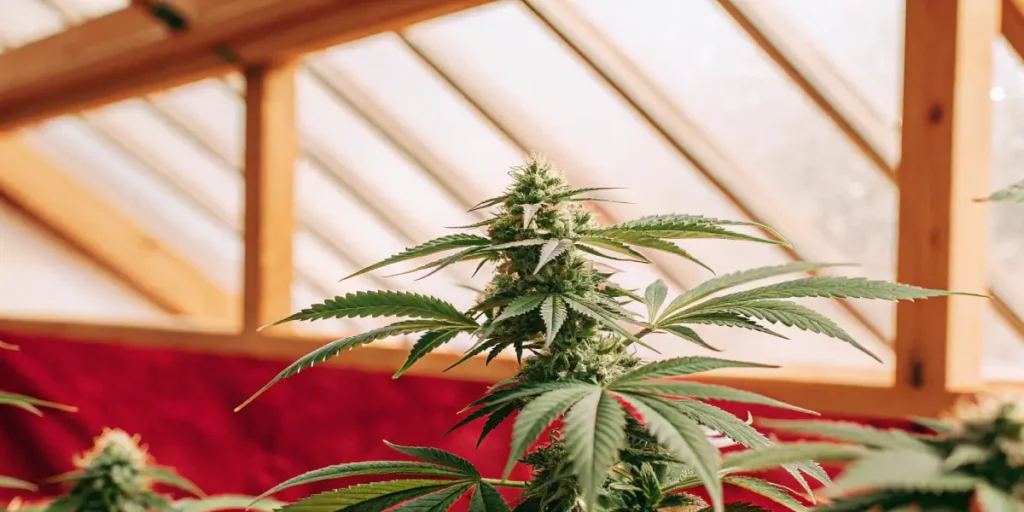
Harnessing Gibberellins for Yield
To harness the power of gibberellins, you might consider applying gibberellic acid (GA3) during the germination phase. This can enhance the sprouting rate and ensure a more uniform start for your plants. Uniform growth is often linked to higher yields.
Another approach is to focus on environmental factors that naturally boost gibberellin activity. Providing proper light, warmth, and moisture can enhance the plant’s natural hormone production. For example, the OG Kush strain responds well to these conditions, often producing substantial yields.
Applying gibberellic acid is a potent way to stimulate the early stages of plant growth. This application can ensure that seeds not only germinate effectively but also develop into strong seedlings. Harnessing gibberellins for maximizing yield is a method that, when combined with optimal environmental conditions, sets a solid foundation for successful cultivation.
In addition to chemical applications, growers should consider the impact of stress reduction on gibberellin activity. Minimizing factors like drought or nutrient stress can help maintain healthy hormone levels, ensuring plants reach their potential. This holistic approach to managing gibberellins can be instrumental in achieving a significant cannabis yield increase through hormone regulation.
Optimizing Cannabis Yield with Plant Hormones
Optimizing cannabis yield with plant hormones involves managing the balance of various hormones. Cytokinins, for example, work alongside auxins to promote cell division. The right balance can lead to increased bud production and a better yield.
Ethylene, another hormone, is crucial during the flowering stage. Too much ethylene can lead to early flowering, while too little can delay bud development. Knowing the balance is key to optimizing yield.
Balancing hormonal interactions is critical for optimizing cannabis yield with plant hormones. By knowing how auxins, cytokinins, and ethylene interact, growers can fine-tune their approach to cultivation. This balance ensures that plants not only grow efficiently but also produce the maximum number of flowers possible, directly impacting yield.
Furthermore, the role of plant hormones in cannabis growth is multifaceted. Each hormone has a specific function and works in harmony with others. By carefully managing these interactions, growers can unlock the full potential of their plants, leading to impressive harvests. This strategic approach to hormone management is essential for any serious cultivator seeking to maximize their yield.
Practical Hormone Management
Managing these hormones often involves both natural and synthetic methods. For instance, pruning techniques can influence hormone levels. Removing lower branches encourages hormones to concentrate on the main colas, boosting their size.
Using products that contain cytokinin can also enhance bud growth. These are often applied as foliar sprays during the flowering phase to maximize their effect. The White Widow strain is known for responding well to such treatments, often resulting in significant yield increases.
Practical hormone management is the key to realizing how plant hormones affect cannabis yield in a real-world setting. By employing targeted pruning and utilizing hormone-enhancing products, growers can direct plant energy towards the most productive parts of the plant. This precise control can lead to substantial increases in yield and overall plant health.
Additionally, environmental controls are paramount for effective hormone management. Consistent temperatures, humidity levels, and light exposure all contribute to optimal hormonal function. By creating an ideal growing environment, growers can ensure that their plants thrive, maximizing the benefits of hormone regulation and leading to a bountiful harvest.
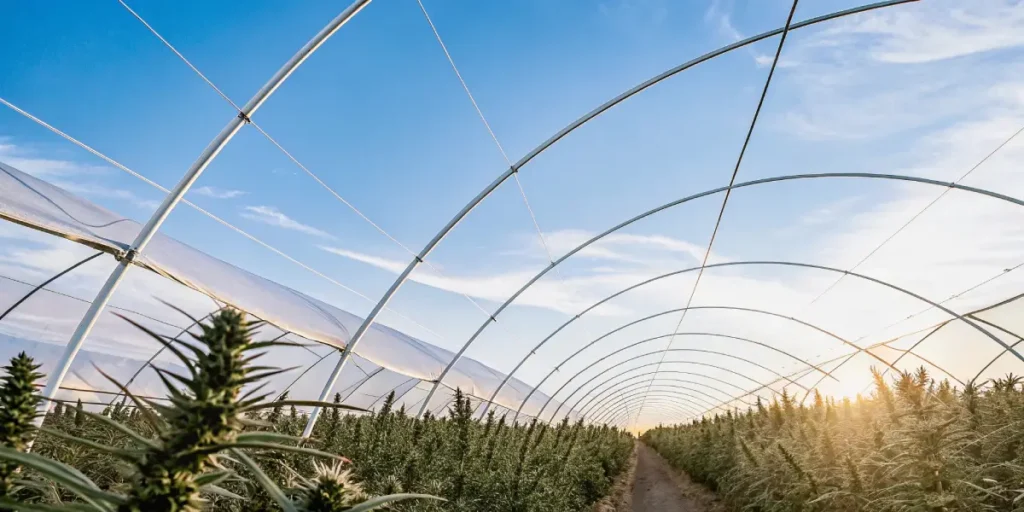
FAQs
What are plant hormones?
Plant hormones are natural chemicals found within plants that regulate growth and development. They act as messengers, signaling the plant to perform specific functions such as growing roots, stems, and leaves, or flowering. Auxins, gibberellins, cytokinins, and ethylene are some of the main types of plant hormones.
These hormones are crucial in determining how well a plant grows and ultimately how much it yields. By knowing and manipulating these hormones, cannabis growers can influence the plant’s development, leading to potentially higher yields.
Knowing the function of plant hormones in cannabis growth is essential for any grower looking to optimize yield. These hormones are integral to every stage of the plant’s lifecycle, from seed germination to flowering and beyond. Their influence on growth patterns, nutrient uptake, and stress response can make a considerable difference in the success of a cannabis crop.
By learning how plant hormones affect cannabis yield, cultivators can implement strategies to enhance hormone function. This includes both natural techniques, like adjusting environmental conditions, and the application of synthetic hormone products. A comprehensive knowing of plant hormones can lead to healthier plants and more abundant harvests.
How do auxins influence cannabis yield?
Auxins primarily affect cell elongation and root development. By promoting these aspects of growth, auxins help the plant to grow taller and develop a more extensive root system. This can lead to stronger plants capable of supporting more flowers and ultimately a better yield.
Through practices such as topping and the use of synthetic auxins, growers can manipulate how auxins affect the plant. These techniques can encourage the plant to develop more bud sites, directly influencing yield.
The effect of auxins on cannabis plant yield is profound. By regulating cell elongation and promoting root growth, auxins help form the backbone of strong and productive plants. Growers who master the use of auxins can expect to see improvements in plant structure and yield potential.
Moreover, auxins are crucial for the plant’s response to light and gravity, influencing how the plant grows towards light sources. This directional growth can be harnessed through training techniques to maximize light exposure on bud sites, further contributing to a cannabis yield increase through hormone regulation.
Can gibberellins improve my cannabis yield?
Yes, gibberellins can significantly impact cannabis yield, especially during the germination and early growth stages. By promoting seed germination and initial growth, gibberellins help establish a strong start for the plant, which is crucial for a successful harvest.
Applying gibberellic acid during germination can ensure more seeds sprout and grow uniformly. This uniformity can lead to more consistent growth and, consequently, a higher yield when the plants mature.
Gibberellins impact on cannabis production is most evident during the plant’s early life. By ensuring rapid germination and robust seedling growth, gibberellins lay the groundwork for vigorous vegetative and flowering stages. This early advantage can translate into higher yields come harvest time.
Furthermore, the strategic application of gibberellins can help overcome dormancy in seeds, a common challenge in cannabis cultivation. By breaking seed dormancy and promoting uniform growth, gibberellins ensure that every plant in a grow room has the potential to reach its full yield capacity.
What is the best way to use plant hormones for yield optimization?
The best approach to using plant hormones for yield optimization is through a combination of natural and synthetic methods. Techniques like pruning and topping can naturally influence hormone levels, while synthetic products can provide targeted hormone boosts.
Supplying the right balance of light, nutrients, and water is also essential. These environmental factors heavily influence hormone production and function, affecting how well your plants grow and how much they yield.
For growers looking to understand how plant hormones affect cannabis yield, a multifaceted approach is recommended. Combining natural techniques with precision applications of synthetic hormones allows for fine-tuning growth and maximizing yield. This strategy ensures that plants receive the right hormonal signals at the right times, enhancing productivity.
Additionally, maintaining optimal growing conditions is crucial for effective hormone use. Consistent watering schedules, balanced nutrient regimens, and proper lighting all contribute to hormone regulation. By attending to these details, growers can create an environment conducive to maximizing the potential of plant hormones and achieving a cannabis yield increase through hormone regulation.
Are there specific strains that respond well to hormone management?
Certain strains, such as Blue Dream, OG Kush, and White Widow, are known to respond particularly well to hormone management. These strains have characteristics that make them suitable for techniques like topping, pruning, and the application of synthetic hormones.
By selecting strains that are known for their responsiveness to hormone management, growers can enhance their yield potential. It’s always beneficial to research the specific needs and responses of the strain you are growing to optimize your results.
Some strains naturally exhibit a better response to hormone management due to their genetic makeup. These strains often show more pronounced growth changes when hormone levels are manipulated, making them ideal candidates for experimenting with yield-enhancing techniques. Knowing the function of plant hormones in cannabis growth is particularly beneficial when working with these responsive strains.
Moreover, selecting the right strain can make a significant difference in how effectively hormones influence growth and yield. Researching and choosing strains that historically respond well to hormone management can provide a strategic advantage, allowing growers to fully leverage the power of hormones to achieve optimal yields.

